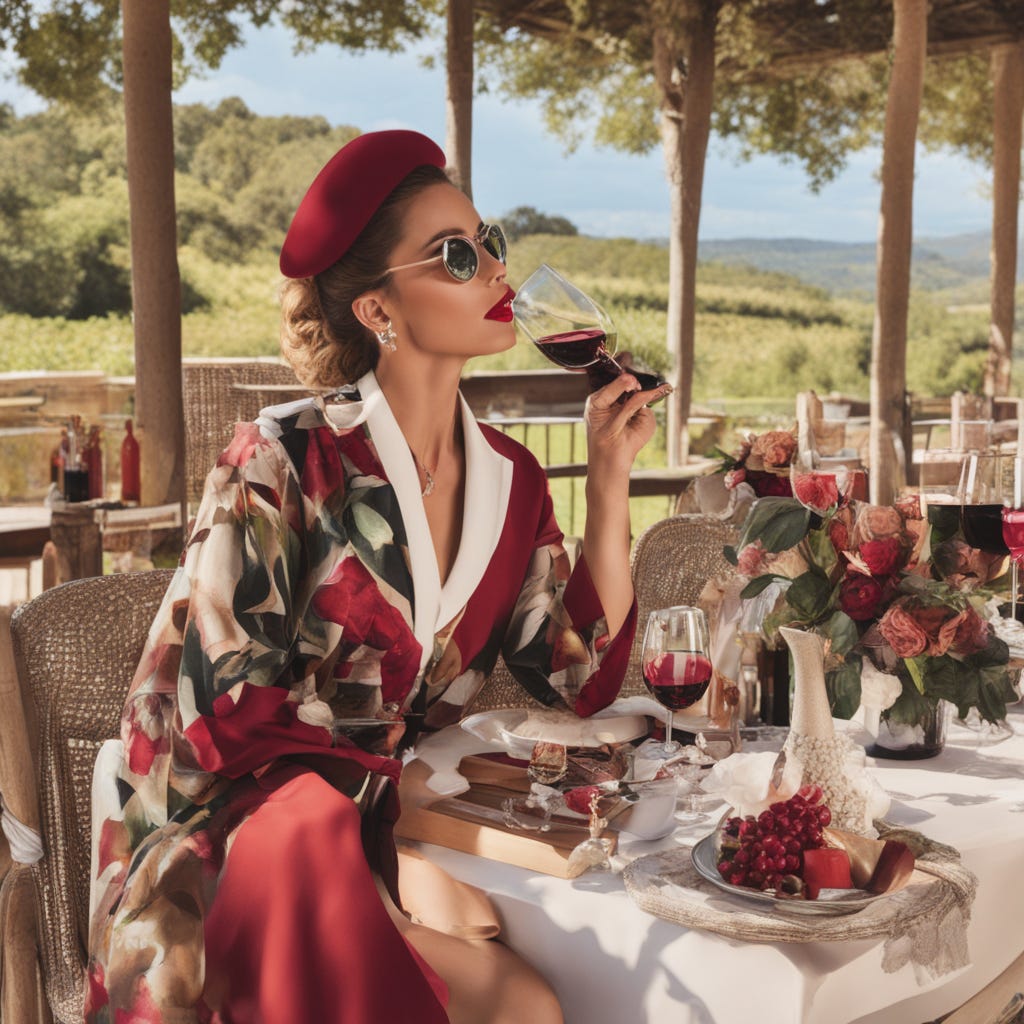Preferred wine styles set wine drinkers apart. Understanding what style you like allows you to have more of it – and to know how to ask for it!
Wine styles are determined by grape(s), growing environment, winemaking, tannin, bottle ageing, alcohol level, sweetness, and body. Winemaking processes can impart texture and flavors such as wood, dairy, bready, or sweet baking flavors. To get more context, click on the dark pink bold text throughout to link to past posts.
1) Fortified & Sweet Wines are combined here as some fortified wines, such as port, are sweet. Fortified wines have grape spirit added to them making them higher in alcohol & body. Sweet wines have significant residual sugar. These wines can be enjoyed with dessert; for proper pairing the wine should be as sweet as or sweeter than the dessert. Do not get put off by thoughts of thick syrupy wines – the highest quality sweet wines are mind-blowingly complex, balanced, and delightful, such as Sauternes!
2) Sparkling Wines are produced as white, rosé, or red and run the gamut of sweetness and complexity. They are light and refreshing with flavors of mineral, fruit, toast and bread, and even oak. The classic example is Champagne.
Now moving into whites:
3) Dry Minerally White Wines have a dominant mineral taste which is often also referred to as earthy. Winemaking imparts minimal to no flavor or texture. There will also be low intensity fruit flavors, most often citrusy. Think Pinot Grigio!
4) Dry or off-dry Fruity White Wines taste fruity making some people consider them sweet, even though they may have little residual sugar. In order to not mask the fruit flavor, they have no flavors from winemaking but may be lightly oaked for texture. Chenin Blanc is a great example.
5) Full body White Wines are typically oaked, which makes them full bodied and gives them a creamy richness, as with oaked Chardonnays. In addition to any mineral and fruity flavors they may have varying levels of winemaking flavor characteristics.
These two following rosé styles can range in sweetness:
6) Light Rosé Wines are light in color and fruit flavor intensity with no winemaking flavors. Often called Provence-style, these wines are elegant and refreshing.
7) Darker Rosé Wines are darker in color and will have more body, deeper fruit flavor, and more winemaking flavors, like a French Tavel.
All red wines have a degree of tannin extraction from grape skins, seeds, and stems and may be oaked or unoaked. The terms old world (European) versus new world (non-European) help to further differentiate red wine styles.
8) Light Body Red Wines, like Gamay Noir from Beaujolais, are lightest in tannins, fruit flavor, and alcohol among the reds.
9) Medium Body Red Wines are best differentiated by their tannin level, placing them in between the light and full body reds. Spain’s Priorat blends are representative.
10) Full Body Red Wines are the highest in tannins & alcohol. A California Cabernet Sauvignon shows this character.
What styles are you attracted to from personal experience or from these descriptions? Or do you need to know more? I look forward to elaborating on these styles in future posts. Stay tuned to Shades of Grape!






Eveline, I'll be migrating from Substack to Ghost over the weekend. You'll still receive posts, and I'll continue to recommend you (Ghost allows recommendations from other platforms). I've had some tech problems with SS that I can;t resolve (partly because it's almost impossible to contact a real person, rather than an AI bot).